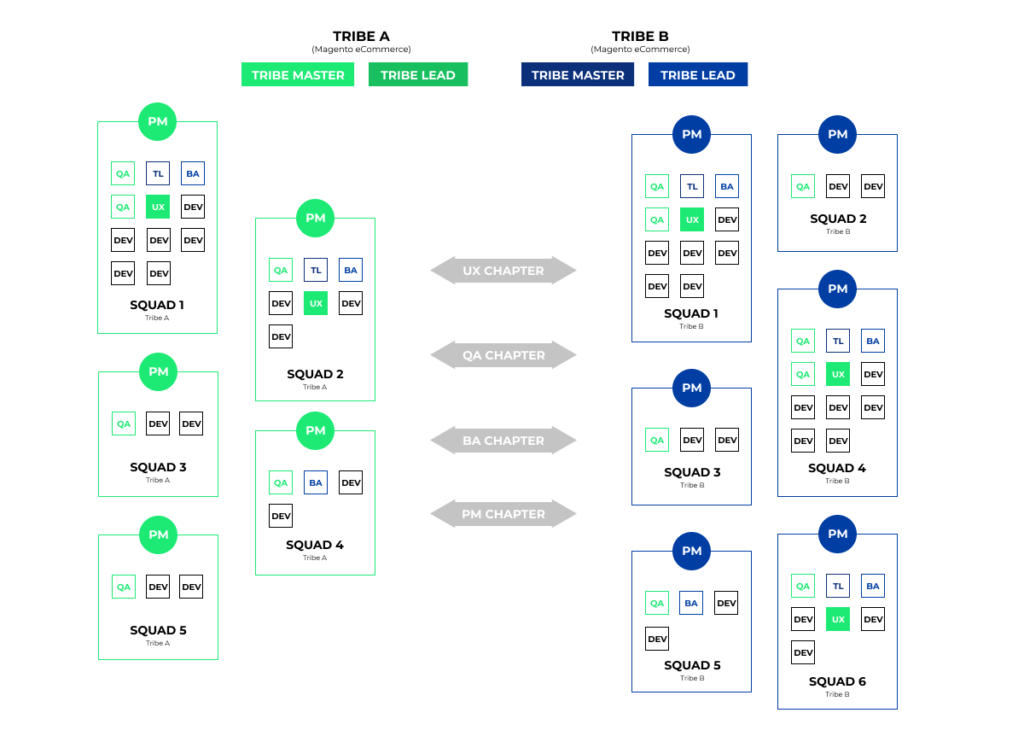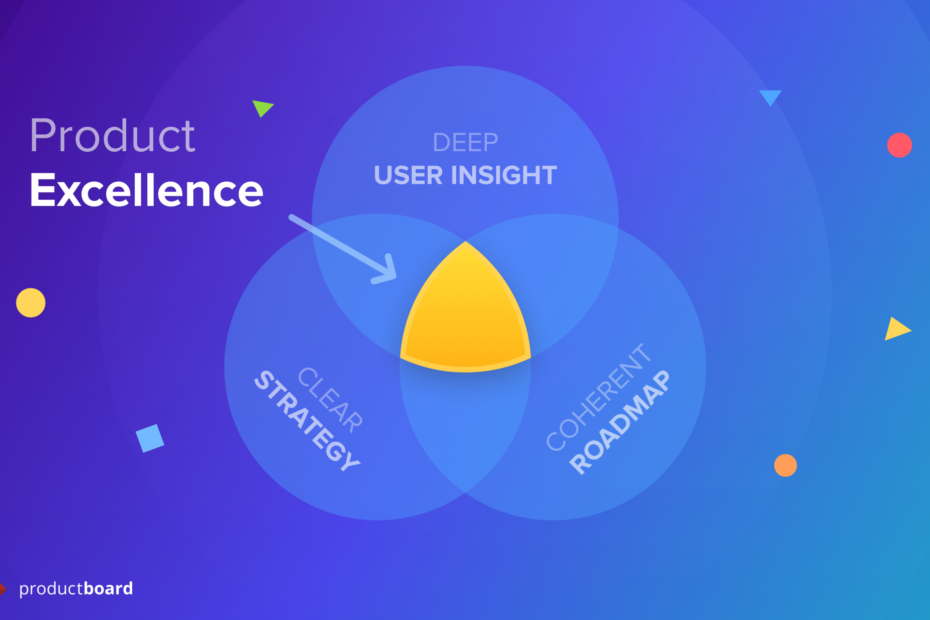For most organizations, it is not easy to figure out what are the key success factors to build the best product organization. First of all, it is primordial to identify the impacts of product manager skills within organization. This is an initial question that seems simple, but could potentially encounter a lot of caveats and roadblocks. Let’s focus on that key pivot role in a product organization that will drive your success.
What does a product manager do?
At a high level, a product management team is a cross-functional team directly responsible to guarantee the success of a product. This team can be comprised of designers, product manager and analyst. In reality, a product manager is directly responsible of a product. The product manager is responsible for the product’s success.

Vision and execution are part of the product manager’s scope. Product managers are responsible for a large scope, let’s go through each of them:
1. Product strategy and vision: Who are the key users? Who are the customers? What are the primary features and use-cases? How do we define success and what metrics can we use to track the product? How should we position the product against competitors? What are some key channels? What is the business model for the product? The product manager will work with many other functions (design, marketing, sales, engineering, data science, etc.) to answer the questions above, but should ultimately be in charge of asking and answering these questions.
The product strategy and vision should reflect the voice of the customer. The product manager should be on top of incorporating user feedbacks during the product lifecycle.
Prerequisite: A strong product strategy includes a clear company vision mission and statements associated. If aclear vision is not built it will be hard for the product manager to decline and prioritize it as features2. Product design and prioritization. Product managers “own” the product roadmap and are responsible for ensuring it has the right set of trade-offs. Tactical aspects of this include writing and receiving feedback on the requirements organizing/directing product road mapping sessions, working with all the functions mentioned above, and making trade-offs on features versus impact and work needed. These responsibilities require a PM to be data and user-driven.
Defining the right metrics, getting agreement on them, and then tracking them enables more alignment on product priorities. The more technical the product manager, the more likely they are able to be able to analyze the data needed to make crucial trade-offs. In parallel, the product manager should strive to understand customer needs and then make trade-offs relative to engineering cost or business impact.
Product managers will also spend time problem-solving aspects of the product or its development. For instance, how to adapt to new regulations / market crisis like Covid19.
Prerequisite: A clear roadmap with minimum 6 months including different paths are necessary in order to give a correct prioritization. This roadmap will be a major asset to the management for driving the company to the right directions.
3. Communication and coordination. Product managers have to communicate team status, progress, obstacles, and functional sequencing to the rest of the organization. This may include driving (or co-driving with engineering) weekly team status meetings, product reviews with the leadership team, and communicating launch or other timelines across the organization.
The hardest part of communication is the “why” behind the product roadmap and sequencing. Part of this will be creating a framework that establishes why some things are prioritized higher than others – and other functions to approve those decisions.
Prerequisite: Having a clear organization and a dedicated committee will ensure a transparent and frictionless product development. That momentum of expression will make sure that the whole organization is aligned on time with the product strategy.
3. Execution and timelines As part of driving the success of a product, product managers should work closely with engineering to set and hit goals on time. Often, the biggest ways a product manager can help the team hit goals includes strong influence to get resources from engineering, design, and other functions, prioritize features and providing a clear roadmap for execution, ask questions to see if it is possible for each function by reducing timelines or remove unneeded features or work, and pushing back on extraneous requests, whether those are internal or external.
Many people associate product execution as something that ends when you launch a product. In reality, there is ongoing product maintenance, feature iteration, and eventually the sun setting or killing of a product. Deprecating a product can be an art in its own right as you transition customers off, deal with pricing changes, or other issues that may cause customer backlash.
Prerequisite: Execution request a strong leadership and an excellent methodology applied. Most of the time Scrum and agile approach is used to have an execution at a fast pace with define scope. There is other approach possible like kanban, safe, waterfall, etc. What matters here is having an excellent methodology execution respect by all stakeholder, which include the delivery, reporting process, and associated committees.
Great product management organizations help a company set product vision and roadmaps, establish goals and strategy, and drive execution on each product throughout its lifecycle. Bad product management organizations, in contrast, largely function as project management groups, running schedules and tidying up documents for engineers.

Building a product, and solving related problems is a team effort. The solution never comes only from the product team, the solution is a gathering of centralized effort drive-by Product Managers that can coordinate with engineering (technical constraints and feature ideas), design, data science, marketing, sales, support, legal, and other functions.
The ultimate role of product managers is to play between all those pieces by using trade-offs between the different stakeholders, business, design and technology.
How implement this job into your organization?
There is different ways to integrate a product management role in your organization. Companies have different philosophies about the product development process and where PMs fit into that process. Let’s list down the most common philosophy applied today.
- Product manager business-centric: This philosophy is to see the product manager as a facilitator and to connect the dot between tech and business requirements. Here PMs gather requirements, write the requirements, and hand it off to engineering to spec out the technical requirements.
- Pro: Engineering can focus on coding without a lot of distraction
- Con: Engineers lose sight of the big picture and do not develop empathy for customers, which can lead to a poor user experience. It also lead to technical debt and work needs to be prioritized over customer requirements.
- Product manager tech-centric: This philosophy is really adapted for technically oriented product companies (cloud, big data, networking). The engineering team can design advanced science in their domain and PMs validate solutions or experience corresponding to the technical to tap into this new technology. The PM role is to approve the market fit by adding customer values to tech solutions.
- Pro: Breakthrough technology can offer customers things they didn’t even know they needed.
- Con: Engineers chase the shiny new thing, over-architect the solution, or iterate forever, seeking perfection before getting customer feedback.
- Product manager BI-Polar: In these cases, there is a strong relationship between business and engineering. Businesses understand clearly the technical context and Engineering clearly understand the process. The decision-making process is clearly defined and shared accountability. Engineers join PMs in customer interviews, and PMs are deeply involved into the sprint meetings to help unblock tasks or clarify requirements.
- Pro: An ideal process design that values technical and addresses the technical debt by having higher performing solutions and teams and an excellent velocity
- Con: Innovate thought a technology or a new business unit might be though. Re-aligned business and tech is difficult from scratch based on a new product
Resources:
Spotify squad framework – Thaisa Fernandes Former Spotify product lead

Pingback: What are the best qualities of a good product manager adapted to your context? – Copelco